11 Best Practices in Self Service Business Intelligence

Self Service Business Intelligence is an approach to data analysis that empowers end users to design and deploy their reports, queries, and analyses within an architecture approved and supported by the organization.
Self Service Business Intelligence saves an organization's business intelligence and Information technology teams the trouble of creating most of the reports, therefore, allowing these teams to concentrate on other tasks that will eventually help the enterprise to achieve its goals.
Self Service Business Intelligence facilities focus on four principal purposes: to ensure ease in access to source data for reporting and analysis, improved and easy support for data analysis features, faster utilization options such as appliances and cloud computing, and simpler end-user interfaces.
In a modern economic environment, enterprises require business intelligence to adopt intelligent and faster decisions. End users, on the other hand, need to have access to critical information at the right time and in a correct format for easy understanding. The importance of BI cannot be underestimated, this model gives businesses a competitive edge and allows them to gain new business opportunities. Enterprises together with their staff need to adopt innovation for them to compete effectively.
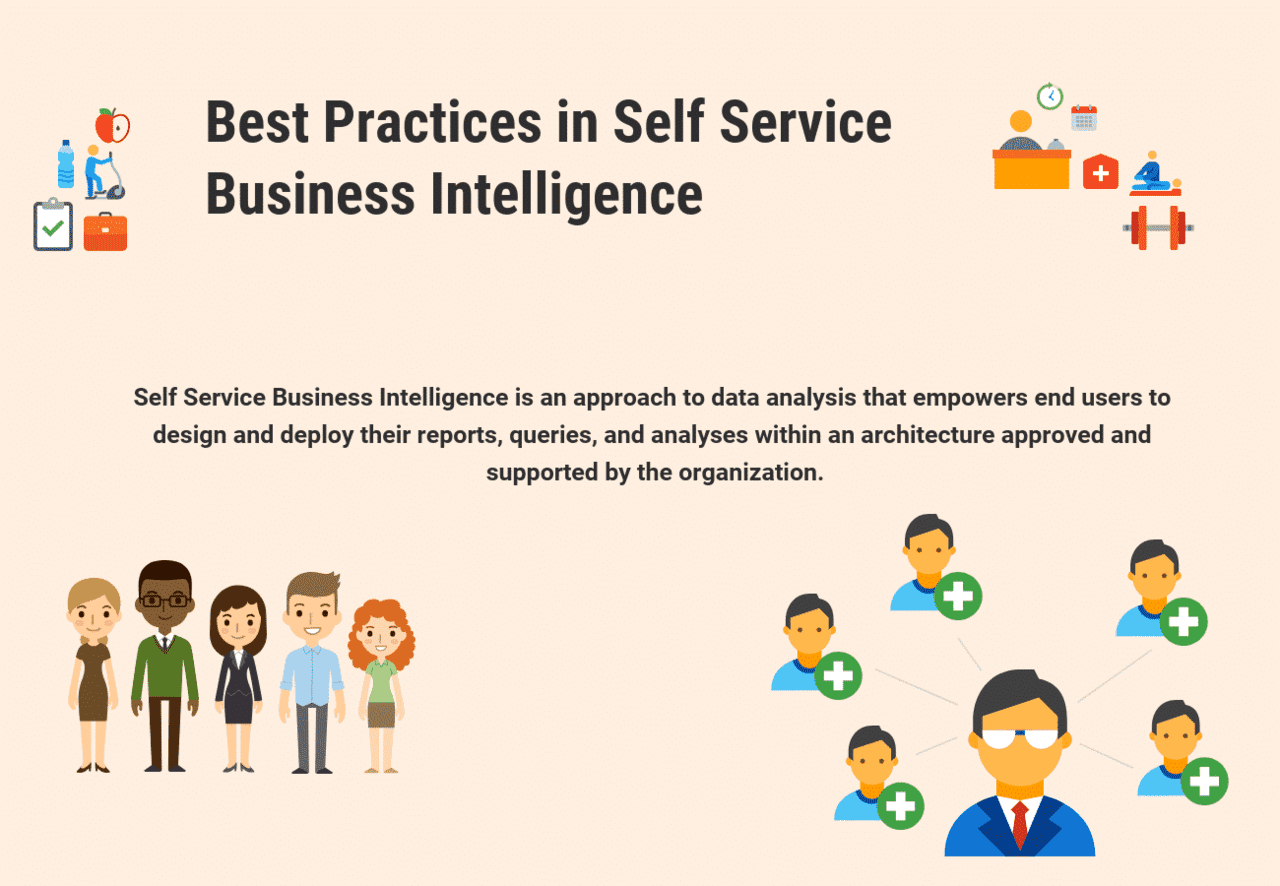
Best Practices in Self Service Business Intelligence
To exploit innovation and improve time to value, companies are shifting to business intelligence as an alternative. One such innovation is to set up an architecture in which the information workers can create and access specific sets of BI reports, queries, and analytics themselves—without the intervention the IT personnel.
The chief objective of this approach is to extend the reach and scope of BI applications to address a broader range of business while at the same time supporting the information workers' need for a personalized and collaborative decision-making environment. IT experts need to become more self-sufficient by having a BI environment that is more usable and more consumable. Usability plays the crucial role in a fully functioning Self Service Business Intelligence environment.
Self Service Business Intelligence must be embedded in an environment that is easy to discover, access, and share information, analysis, and reports. It must also be in an easy-to-use format and delivered to a device and user interface of their choosing.
To ensure that BI is easy to consume and enhance there requires being clear business definitions that can be easily accessible as well as tracked and documented data lineage. Additionally, the information needs to be presented in a manner that is easy for users to understand. These features allow BI developers to create a system that is appealing to business users and promotes the adoption of self-service.
You may like to read How to Select the Best Self Service Analytics Software for Your Business and Top Self Service Business Intelligence Software
Top Best Practices in Self Service Business Intelligence
Self Service BI Best Practices 1- The installation of easy-to-use BI tools does not necessarily create a self-service BI environment
It is essential to have a robust infrastructure that supplies required data in place. This infrastructure needs sound planning and design, the integration of data, processing of the data quality, data models for the data warehouse and marts, scalable databases among others. The system also needs an understanding of the types of data and the team's data requirements.
There needs to be a clear understanding that technological installations do not enable business intelligence environment to be self-service enabled. A complete and reliable infrastructure will eventually result in easy access, simplification of analytics, and the display of results that are easy to understand. This also provides the workers with the right environment. Technology must also match the tasks users want to perform in a way that is simple and engaging to the user.
Self Service BI Best Practices 2- IT needs to monitor the self-service BI environment.
There needs to be a system of administration and management that ensures that IT has monitoring and oversight capabilities during deployment, sharing, collaboration of BI capabilities by the information staff. IT needs to have the ability to monitor the utilization of any BI component that an information worker publishes, whether the data used was from a governed or ungoverned source. They also need to know who else is using it.
IT should have the ability to determine which queries are too costly, long-running, or slow down the performance of other queries. In addition to monitoring BI components, IT needs to secure, validate, and audit them. It is important to ensure that end-users feel that they have the ability to create their analytic capabilities while IT still has the ability to monitor when to intervene and help out.
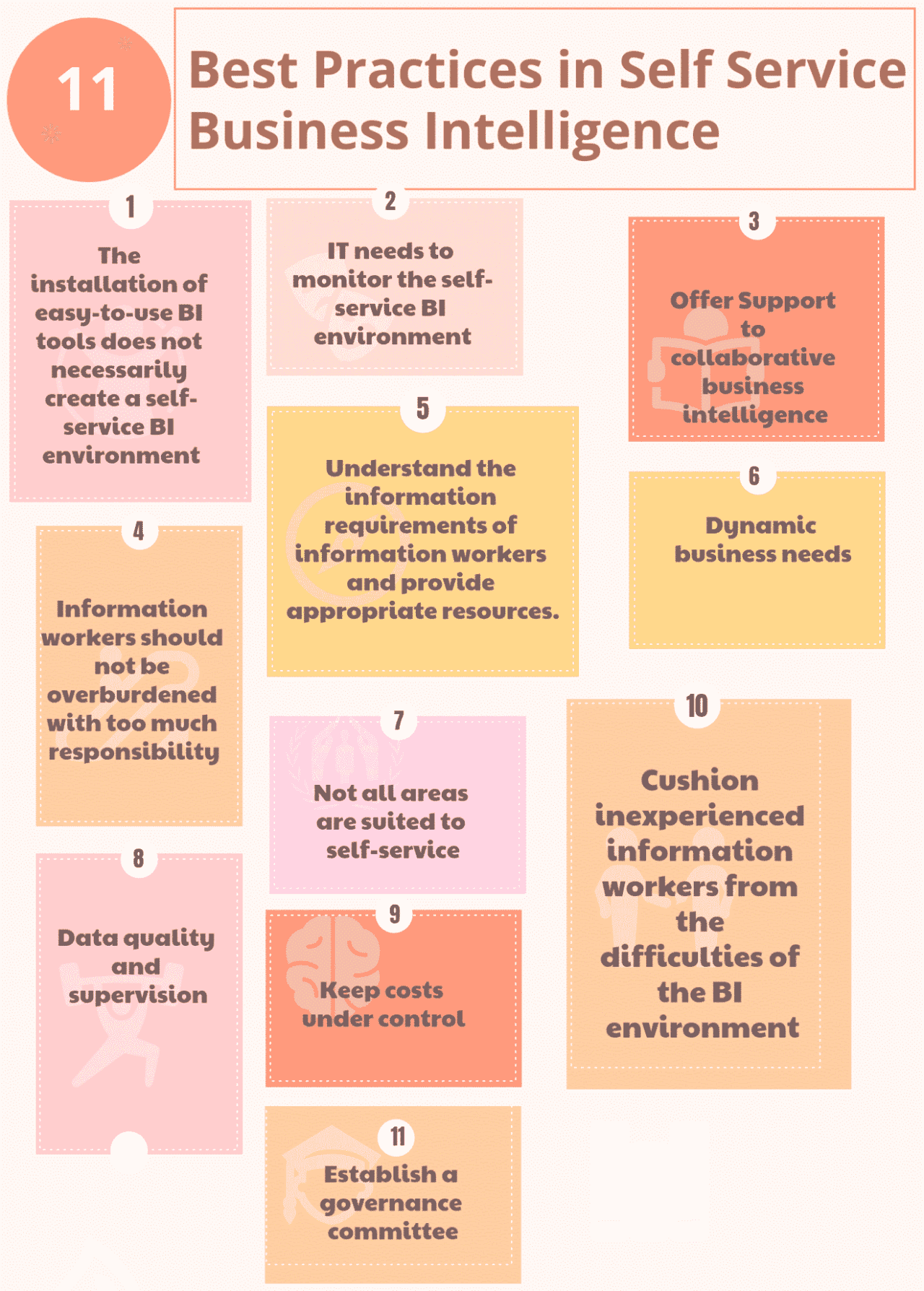
Top Best Practices in Self Service Business Intelligence
Self Service BI Best Practices 3-Offer Support to collaborative business intelligence.
Different types of information workers need to be enabled to share BI results and jointly work towards defining new ways of viewing and analyzing data. Technology that the information worker can comprehend and apply easily need to be encouraged.
Self Service BI may have to imitate what information workers are familiar with. Technology that easily marries with your conventional BI environment need to be encouraged. Collaborative features that enable teams of information staff to develop and publish charts, dashboards etc. while the users of these analytics to rate or comment on them should be supported.
Self Service BI Best Practices 4-Information workers should not be overburdened with too much responsibility.
Information workers do not need to burdened with the responsibility for generating information and reports, this responsibility is not part of their job description. Efforts should be made to ensure that those who do develop self-service BI components also define key metrics, entities, orders, and terms in a consistent fashion.
Training on the use of existing technical and business metadata as well as the existing standards and nomenclature should be offered. A balance should be made between self-service and IT-generated delivery of information. This can be done by taking small steps toward self-service if the business users are not used to technology or are afraid of doing something "wrong," or feel that they lack proper training for the activities. Not using self-service BI will destroy the system faster. The business users need to adhere by the rules when it comes to defining their metrics, analytics and algorithm.
Self Service BI Best Practices 5-Understand the information requirements of information workers and provide appropriate resources.
The requirements of each group of information workers wants to accomplish with BI development need to be considered. The most important task here is to get into the heads of the users to understand what it is that they want to do, accomplish, or create.
The reluctance of the business people to embrace this service may largely come from the fear of the unknown constructed around the way they have always done things, or lack of information about the benefits that they might accrue from the BI environment. As users increase familiarity with the self-service environment, many may begin to change their role from consumer to producer, from producer to collaborator.
Self Service BI Best Practices 6-Dynamic business needs.
Self-service Business Intelligence seeks to match the speed at which the business changes. BI developers can with minimal effort create a system where the business community can select the BI components they need to assess the business situation and develop proper decisions.
The infrastructural set up adopted by the developers can be equated to a buffet table where end users can then select from a range of alternatives create their own combinations of analyses, reports, and data sets, depending on individual needs.
Self Service BI Best Practices 7-Not all areas are suited to self-service.
Certain operational, tactical, and management areas require a standardized format. IT plays an important role in developing professional reports and dashboards while at the same time maintaining the infrastructure that self-service solutions operate on.
Before launching the self-service BI, there's need to define the difference between IT-developed reports and dashboards and business-enabled BI. It is recommended that IT should develop reports that can be widely consumed across organization to ensure standardization. Additionally, IT should enable reports for regulatory and compliance purposes
Self Service BI Best Practices 8-Data quality and supervision.
Data governance becomes a critical aspect as more users are empowered to use specific data through self-service systems. Data quality checks and data security procedures should be determined to secure and safeguard data is accuracy. IT is an important component in aiding business groups to understand where data quality issues already exist or can arise.
Self Service BI Best Practices 9-Cushion inexperienced information workers from the difficulties of the BI environment.
Users can be guided through BI by features such as Web browsers, interactive graphics, wizards, drop-down lists, and prompts. This frees up IT experts from dedicating too much time on responding to requests for new data and developing reports. This gives the information consumers some form of control and adds to the flexibility of the overall BI environment.
Care need to be taken that what is intuitive to a BI professional is not necessarily intuitive to an unsophisticated user. BI developers have to think expansively honestly comprehend what business users who want Self Service Business Intelligence really need.
Self Service BI Best Practices 10-Keep costs under control.
Software need to be viewed as a service geared towards cutting capital and the cost of maintaining an IT staff. Considerations need to be made to prevent breaking the budget through the implementation self-service BI.
The deployment options selected by BI implementers need to significantly reduce the costs. The developers need to ensure that the deployment options selected fit into the overall conceptual and technical architecture.
Self Service BI Best Practices 11-Establish a governance committee.
This committee needs to have representatives from both the information team and IT experts. The team's responsibilities include reviewing requests for new components or modifying existing ones, making determination on whether an existing component can satisfy a request or if a new one is needed, examining requests for self-service, determining what to provide, and identifying needed training.
This committee is not meant to be a restrictive group but it should perform the needed PR and communications about its purposes to ensure its role is entrenched.
You may like to read How to Select the Best Self Service Dashboard for Your Business
Here are the trending and the top rated Self Service BI for you to consider in your selection process:
Here are the trending and the top rated Free Self Service BI for you to consider in your selection process:
You may like to read How to Select the Best Self Service Analytics Software for Your Business and Top Self Service Business Intelligence Software
What is Self Service Business Intelligence?
Self Service Business Intelligence is an approach to data analysis that empowers end users to design and deploy their reports, queries, and analyses within an architecture approved and supported by the organization.
What are the Best Practices in Self Service Business Intelligence?
The Best Practices in Self Service Business Intelligence include installation of easy-to-use BI tools does not necessarily create a self-service BI environment, IT needs to monitor the self-service BI environment, Offer Support to collaborative business intelligence, Information workers should not be overburdened with too much responsibility and more.






















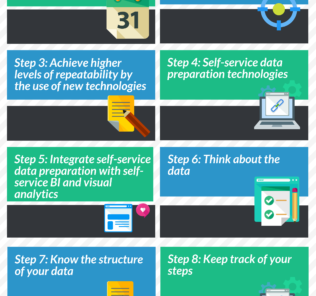
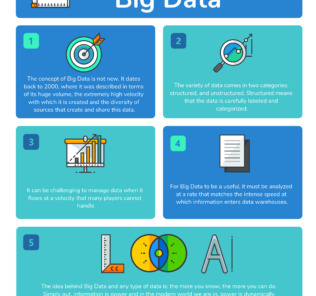
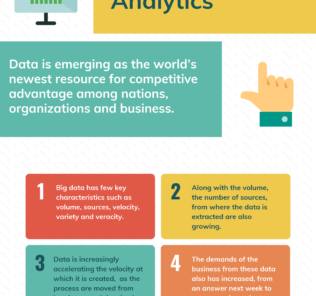
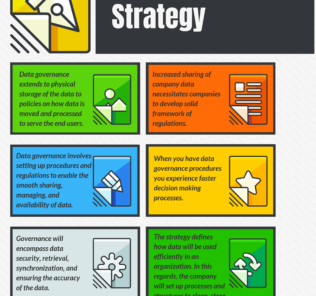
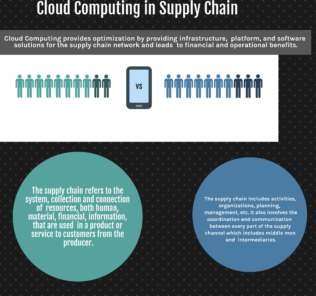
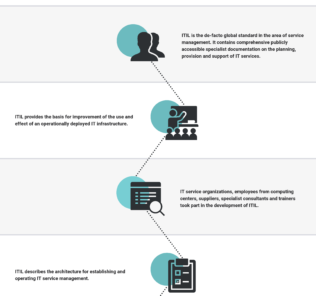




By clicking Sign In with Social Media, you agree to let PAT RESEARCH store, use and/or disclose your Social Media profile and email address in accordance with the PAT RESEARCH Privacy Policy and agree to the Terms of Use.